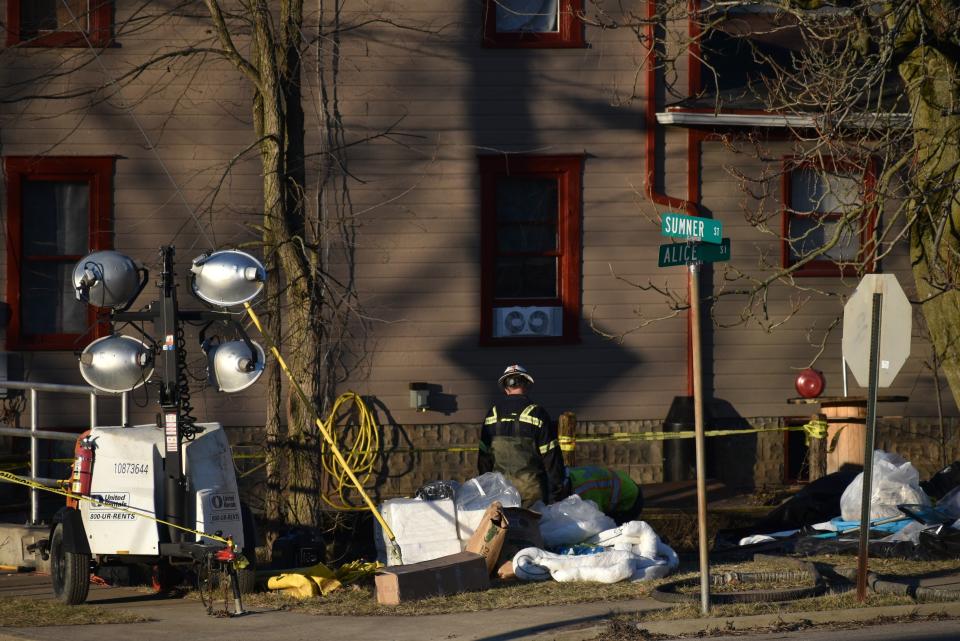Did Ohio train derailment have long-term health impacts? Pitt scientists look for answers.
Federal officials are funding University of Pittsburgh research into community health outcomes around the site of last year's Norfolk Southern train derailment, where a controlled burn-off sent a tower of toxic smoke into the Ohio and Pennsylvania skies.
The scientists will work with community members to gather air and water samples from about 100 homes, along with biospecimens and health data from about 300 volunteer participants who live around the site of the February 2023 crash, according to a Pitt news release.
Pitt received a pair of two-year grants totaling roughly $1 million from the National Institutes of Health to complete the study.
The researchers will collect health information within an 8-mile radius of the derailment – and will include residents from Ohio and across the state border in Pennsylvania, a Pitt spokesperson said.
Year of uncertainty: Pa. farmers, rescue owners reflect one year after East Palestine train disaster

In particular, they’ll be looking for signs of liver dysfunction, one of the potential side effects of exposure to vinyl chloride, a chemical released during the crash.
“Given the volatile nature of these contaminants and the stress the community is facing, it is crucial that we collect these data and act on them to protect the most vulnerable populations affected by this disaster,” Juliane Beier, professor of medicine and environmental and occupational health, said in a news release.
In addition to analyzing homes, Pitt researchers will take soil, water and sediment samples to test for chemical contamination near the crash site.
“We will be working alongside residents and community partners of East Palestine, using scientifically rigorous, community-engaged strategies to collect environmental samples, and will meet regularly with community leaders to discuss our findings and any concerns that may arise,” said Peng Gao, a Pitt professor of environmental and occupational health.
The East Palestine, Ohio, train derailment involved several cars that were carrying vinyl chloride, a flammable gas, and other hazardous chemicals. Amid concerns about the possibility of an explosion, officials opted to evacuate the area as the railway company vented chemicals from the cars and burned them off.
Toxic release: Toxic chemicals released from Ohio train derailment to reduce explosion risk
The controlled fire sent a column of black smoke into the atmosphere around the crash site, and nearby residents in Ohio and Pennsylvania reported rashes, headaches and nausea in the aftermath of the burn.
Government officials assured residents it was safe to return within days of the crash and have tested the soil, crops, air and water in the area. But as of yet, there aren’t any studies showing long-term impacts from chemical exposure around the derailment.
This article originally appeared on Beaver County Times: Pitt researchers to study health impacts of East Palestine derailment

